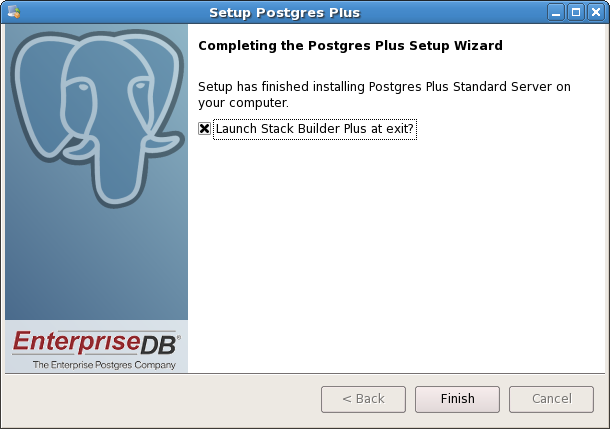
- POSTGRES APP DEFAULT PASSWORD HOW TO
- POSTGRES APP DEFAULT PASSWORD PASSWORD
Using this method you can manage the granularity of the privileges and you can easily grant and revoke groups of access to the users.
POSTGRES APP DEFAULT PASSWORD PASSWORD
We create the app_user role and make it “join” the read only group CREATE ROLE app_user WITH LOGIN ĪLTER ROLE app_user WITH PASSWORD 'somePassword' ĪLTER ROLE app_user VALID UNTIL 'infinity' We create the read only group and grant the role to that group CREATE ROLE g_example_ro NOSUPERUSER INHERIT NOCREATEDB NOCREATEROLE NOREPLICATION' GRANT SELECT ON ALL TABLES IN SCHEMA example to r_example_ro ĪLTER DEFAULT PRIVILEGES IN SCHEMA example GRANT SELECT ON TABLES TO r_example_ro GRANT USAGE ON SCHEMA example to r_example_ro We create the read only role and grant the object privileges to it CREATE ROLE r_example_ro NOSUPERUSER INHERIT NOCREATEDB NOCREATEROLE NOREPLICATION We will create a read only group for the example_schema and then grant it to a user:

And finally, the user roles will be granted with one or more group roles and will be the ones with the login privilege. The group roles ( g_ roles ) will be granted with the r_ roles, so they will be a collection of r_ roles. The roles (r_ roles) will be the ones having the privileges over the objects.
user role (generally personal or application names). In this strategy you will create three different types or roles: In postgresql everything is considered a role, but we are going to make some changes to this. Managing this is not always easy and it can get really messy if not done well from the beginning.Ī good way of keeping the privileges under control is to use the role, group, user strategy. The golden rule for security regarding user management is to grant users the minimum amount of access they need. These are statement/session parameters that can be set at different levels (db, user, session), so managing these wisely can help us minimize the impact of the attack. Parameters such as work_mem, maintenance_work_mem, temp_buffer, max_prepared_transactions, temp_file_limit are important to keep in mind in case you have a denial of service attack. You can do this by modifying the value of the port parameter. Here is a good practice to allow connections only from the known ips or your network, and avoid general values like “*”,”0.0.0.0:0” or “::”, which will tell PostgreSQL to accept connection from any IP.Ĭhanging the port that postgresql will listen on (by default 5432) is also an option. You can use the parameter listen_address to control which ips will be allowed to connect to the server. There are some parameters on the nf that we can modify to enhance security. There are a lot of combinations you can make to refine the rules (the official documentation describes each option in detail and has some great examples), but remember to avoid rules that are too permissive, such as allowing access for lines using DATABASE all or ADDRESS 0.0.0.0/0.įor ensuring security, even if you are forgetting to add a rule, you can add the following row at the bottom: # TYPE DATABASE USER ADDRESS METHODĪs the file is read from top to bottom to find matching rules, in this way you ensure that for allowing permission you will need to explicitly add the matching rule above. # Reject any user from any host with IP address 192.168.94.x to connect # the connection (typically the operating system user name). # to database "postgres" as the same user name that ident reports for So the general format will be something like this: # TYPE DATABASE USER ADDRESS METHODĪn example of configuration can be as follows: # Allow any user from any host with IP address 192.168.93.x to connect This file controls client authentication.įrom the official postgresql documentation we can define the pg_hba.conf file as a set of records, one per line, where each record specifies a connection type, a client IP address range (if relevant for the connection type), a database name, a user name, and the authentication method to be used for connections matching these parameters.The first record with a matching connection type, client address, requested database, and user name is used to perform authentication. 
When installing PostgreSQL a file named pg_hba.conf is created in the database cluster’s data directory.
POSTGRES APP DEFAULT PASSWORD HOW TO
In this post, we will show you how to harden the security around your database to keep your data safe and secure. Once you have finished the installation process of your PostgreSQL database server it is necessary to protect it before going into production.






 0 kommentar(er)
0 kommentar(er)
